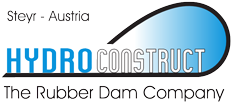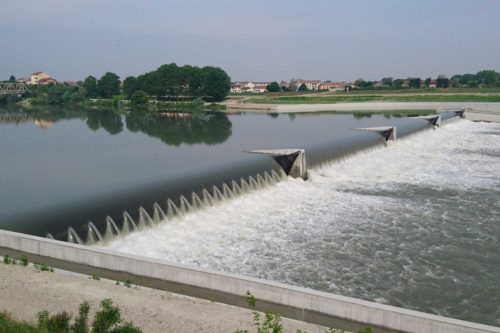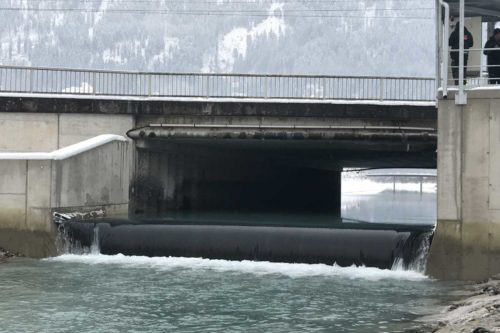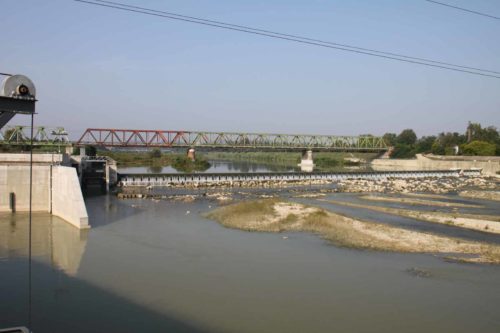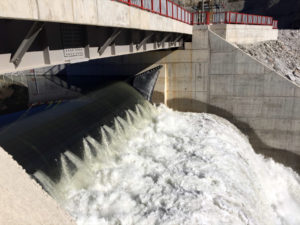Rubber dams and their applications
Rubber dams are weir systems in which an elongated rubber body is firmly connected to the foundation of the weir system. The rubber body can be filled with water or air, depending on the design. The height and thus the overflow of the weir can be determined by filling and draining the weir. Water-filled rubber dams by Hydroconstruct are usually filled with river water, controlled by the hydrostatic pressure of the water in the regulating shaft.
Theoretically, independent regulation by the pressure of the overflowing water is also possible; the rubber dam lowers independently by reducing the overpressure via an overflow threshold. This is a feature that is otherwise only possible with electronic control.
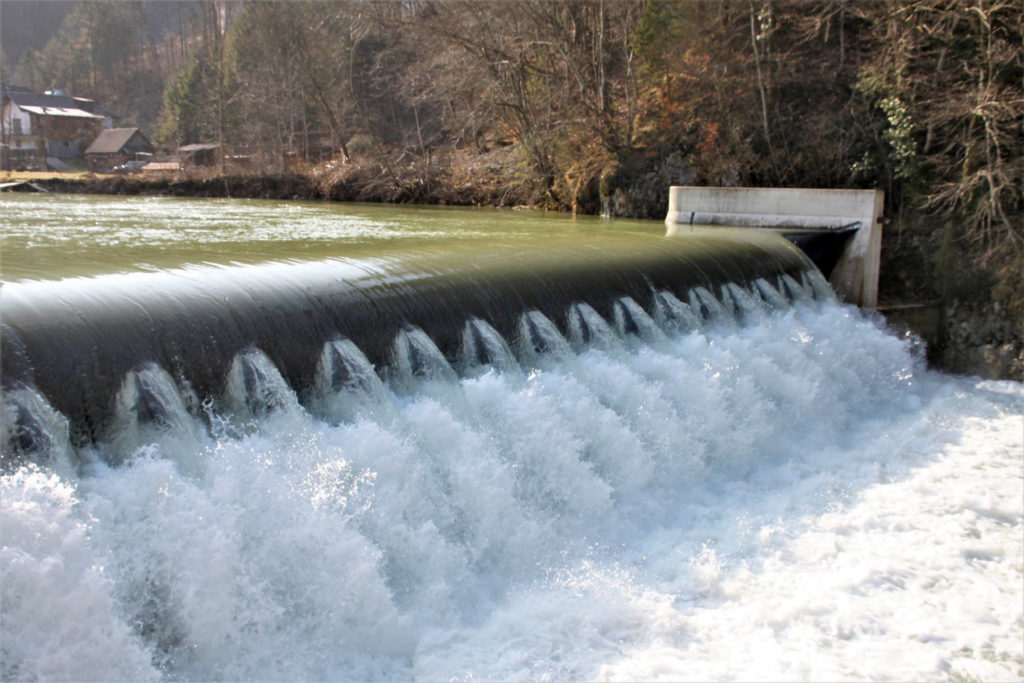
The advantages of rubber dams over conventional weir systems
- Shorter construction time
- Long lifetime
- Easy maintenance
- Hardly any energy costs
- More resistant to seismic activity
There are basically two kinds of rubber dam:
Water-filled
In Hydroconstruct’s water-filled version, the regulating shaft system comprises a shaft structure with individual chambers equipped with corresponding hydraulic regulating and control devices such as flaps and gates. The regulating chamber is connected to the interior of the rubber dam via a pipe system incorporated in the weir foundation structure. Control is via a headwater probe. The weatherproof control cabinet with the electrical controls and regulating equipment is located directly at the weir or very close by.
In the standard Hydroconstruct design, all steel components (clamping system and pipes in the regulating shafts) are hot-dip galvanized, the pipes set in concrete are made of PVC plastic, and the anchor bolts are made of stainless steel.
The water-filled rubber dam system is particularly notable for delivering unrestricted regulation of the dam level. When the outflow increases, the dam height lowers continuously. When the inflow decreases again, the height is continuously raised again by the filling pump.
In winter operation, when the rubber dam is stationary and not overflowing, the fill-water can be protected against ice formation by pumping through a small amount river water with a temperature greater than 1°C.
Air-filled
The air-filled dam has a regulation apparatus consisting of a piping system leading from the inside of the rubber dam via a shaft system into the control room. The bottom of the shaft is below the level of the weir sill in order to be able to drain off the condensed water that has formed.
The operating room above houses the regulating and control equipment with fan. Control is via a headwater probe. The control cabinet with the electrical control and regulating equipment is also located in the operating room.
In the standard Hydro Construct design, all steel components (anchoring and clamping system) are hot-dip galvanised, the piping system and anchor bolts are made of stainless steel.
The main advantage of the air-filled system is faster recovery after a flood event.
Under normal operating conditions, the rubber dam is inflated, and can be used to regulate the water level with continuous lowering up to 15%, after which it is usually completely deflated, but can also be operated further if the irregularity of the weir discharge does not play a role.
This results in a V-shaped buckling of the membrane.
You may now be asking yourself:
Membrane material?
This consists of an extremely resistant synthetic rubber material joined together in a vulcanisation process.
Different layers:
- Top layer made mainly of EPDM
- supporting layers with fabric inserts made of nylon or polyester
- inner protective layer
What happens when flotsam (e.g., during high water) hits the weir?
To all intents and purposes. flotsam cannot harm a rubber dam for the following reasons:
- The extreme resistance of the membrane.
- The shape, which allows the flotsam to slide over the weir edge.
- Because the weir is flexible, impacts are well cushioned.
Can damaged rubber dams be repaired?
If damage does occur, it can be repaired by cold bonding (cold vulcanization).
Does a rubber dam burst if it is punctured?
No, a rubber dam can be punctured with massive force, but rapid tearing, which would lead to bursting, cannot occur.
What happens in sub-zero temperatures?
For air-filled weirs, which harbour condensation within the rubber membrane, make sure the valves are located in a frost-free area.
Water-filled rubber dams are also suitable for winter operation. Many years of experience, especially in Austria, show that outside temperatures with double-digit degrees below zero do not cause any problems.
Precautions taken when there is no water flow over the top of the dam (when a danger of frost can occur) such as pumping through, are usually sufficient to keep the inside of the membrane free of ice. In principle, however, ice formation inside the membrane is not a major problem when the weir height stands at 0.5 m.

Casale Monferrato -
Hydro Construct builds Europe's largest inflatable weir
We built the largest inflatable weir in Europe in Italy.
Find out more about Casale Monferrato. More information
